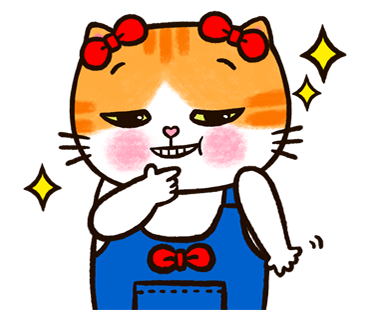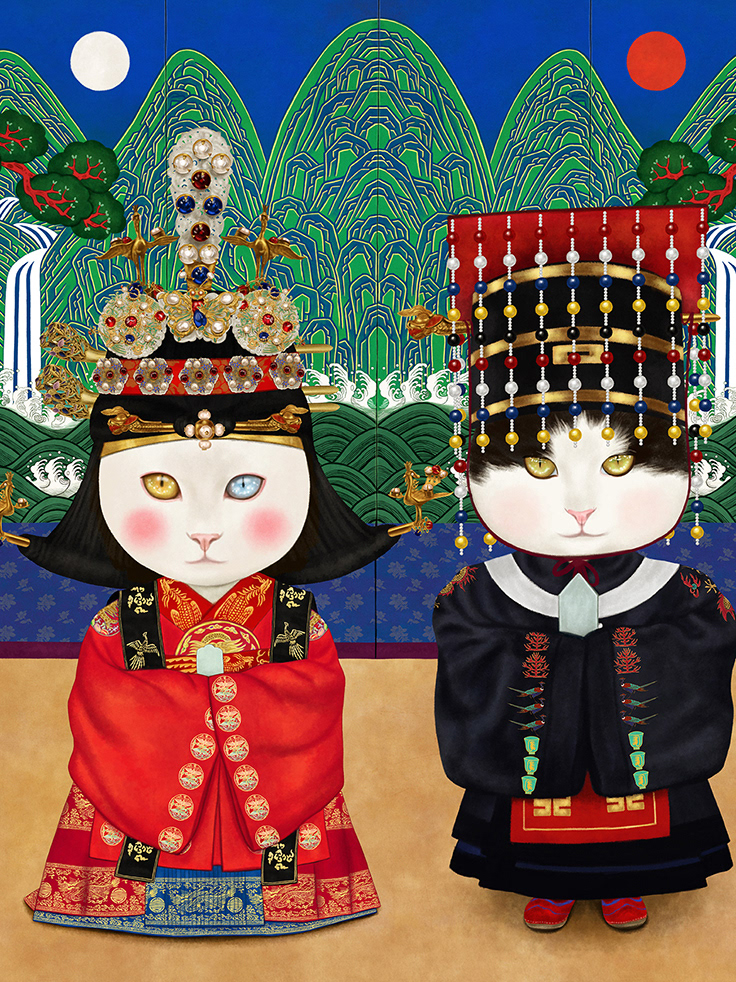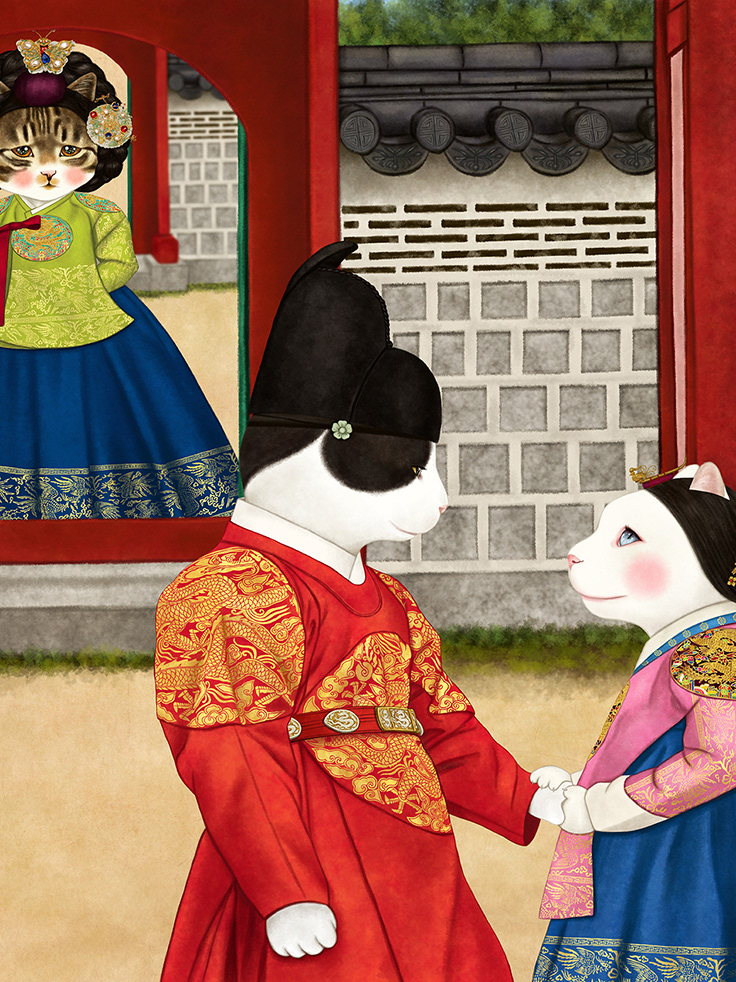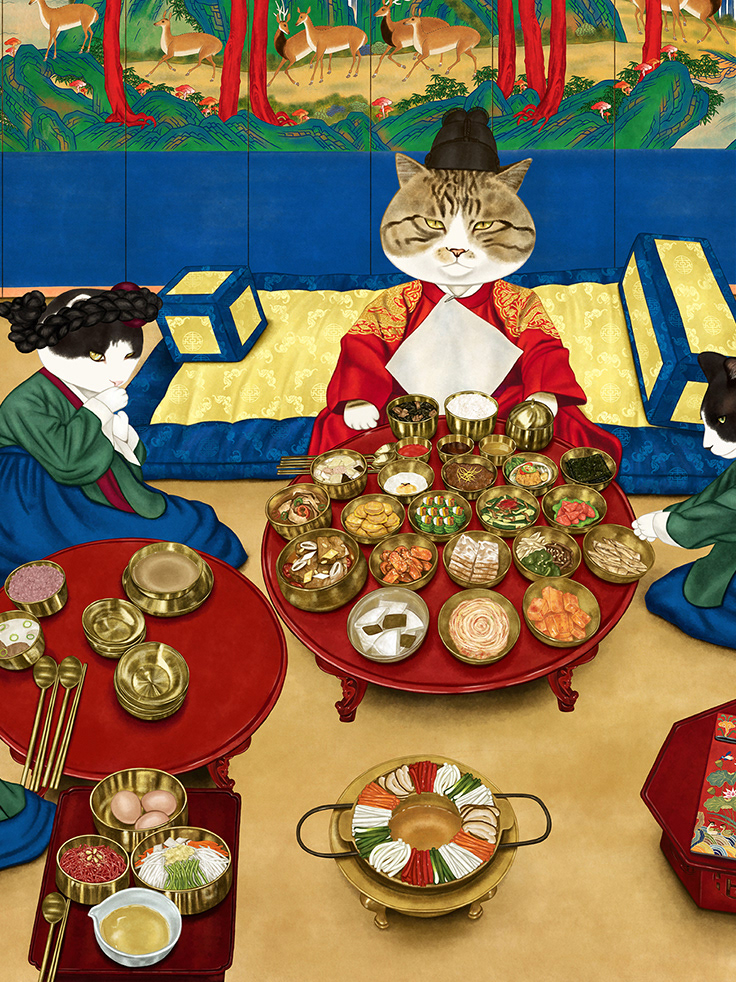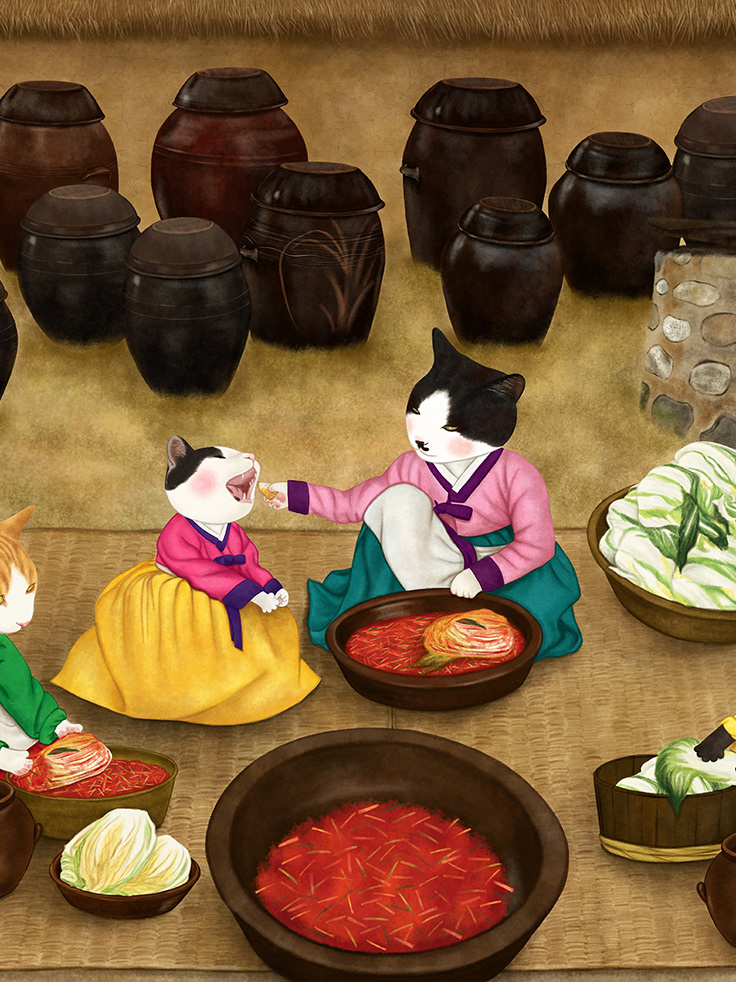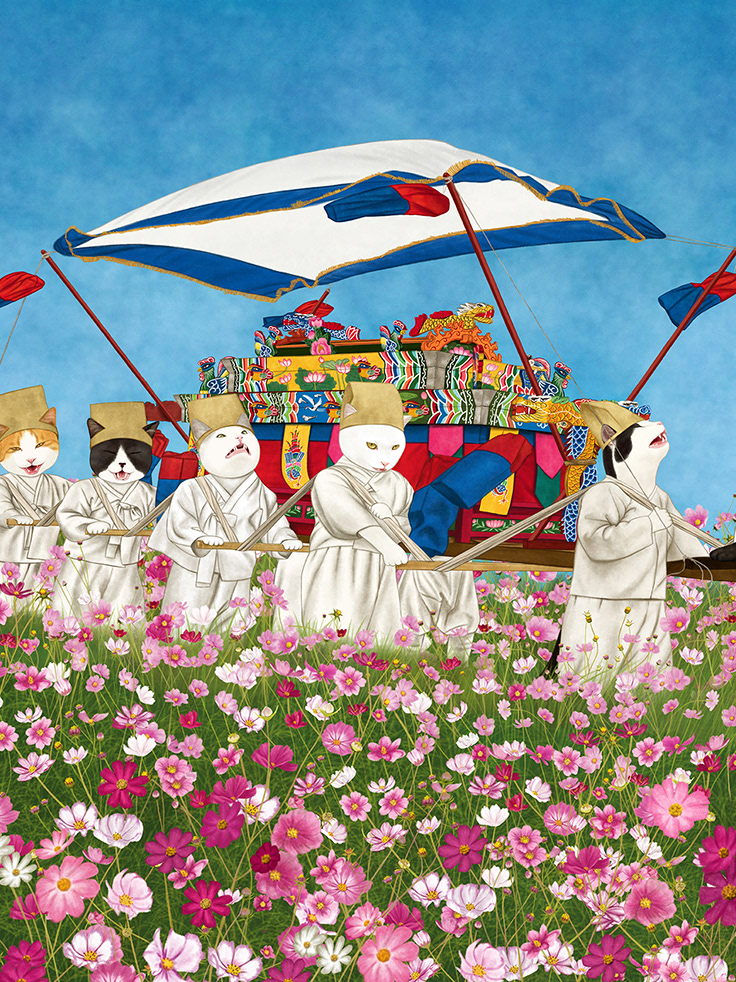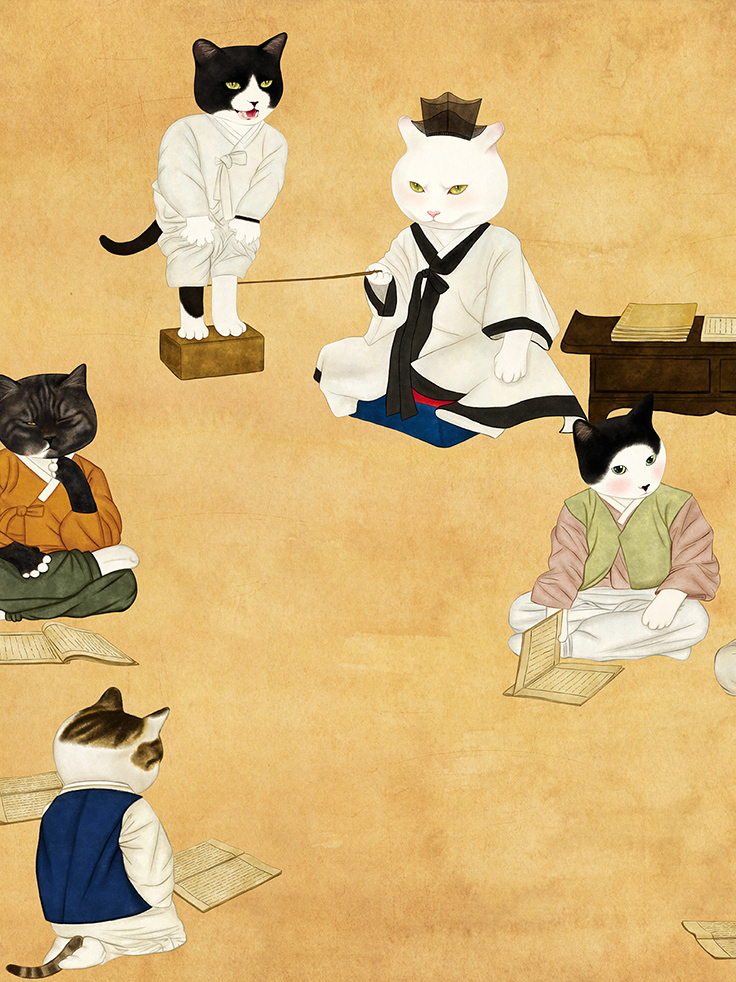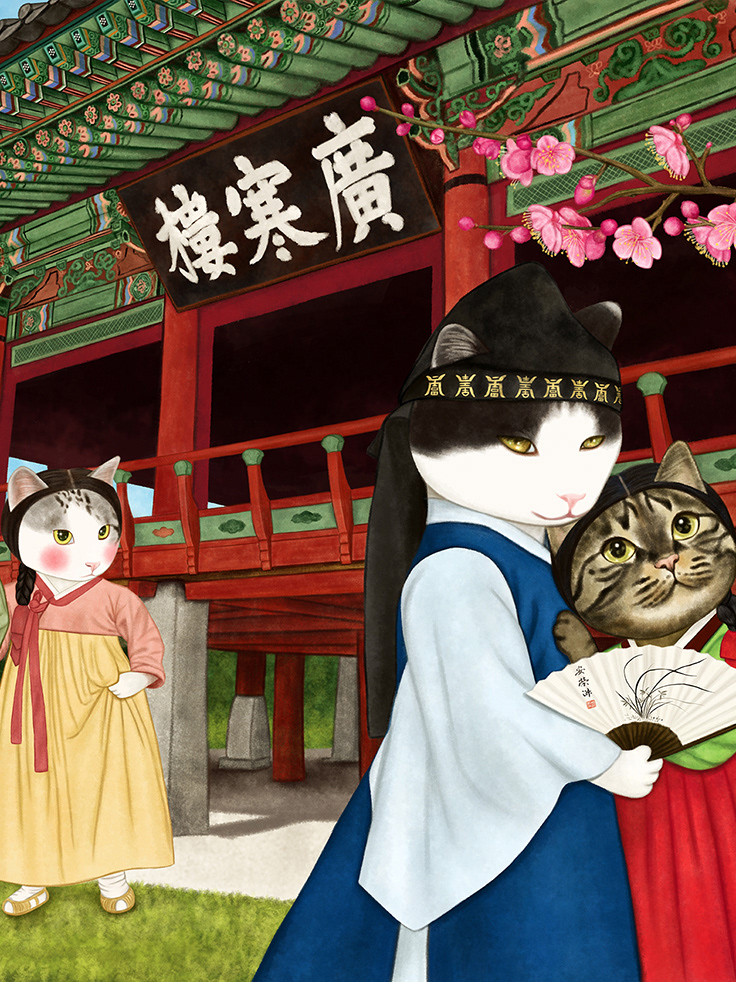Chapter 5. The Joseon Dynasty of Faith.
- page 3-
Gut or Kut
Gut or Kut
2018. Digital painting
Gut, kut or goot are the rites performed by Korean shamans, involving offerings and sacrifices to gods, spirits and ancestors.
They are characterised by rhythmic movements, songs, oracles and prayers.
These rites are meant to creat
e welfare, promoting commitment between the spirits and humankind.
The major categories of rites are the naerim-gut, the dodang-gut and the ssitgim-gut.
They are characterised by rhythmic movements, songs, oracles and prayers.
These rites are meant to creat
e welfare, promoting commitment between the spirits and humankind.
The major categories of rites are the naerim-gut, the dodang-gut and the ssitgim-gut.
Through song and dance, the shaman begs the gods to intervene in the fortune of humans.
The shaman wears a very colourful costume and normally speaks in ecstasy.
During a rite, the shaman changes his or her costume several times.
Rituals consist of various phases, called gori.
The shaman wears a very colourful costume and normally speaks in ecstasy.
During a rite, the shaman changes his or her costume several times.
Rituals consist of various phases, called gori.
In Korea, Gut is an act of comforting people's pain by a shaman.
This book is called "Cats' Journey to Chosun Dynasty" which I published.
It is an historical illustration book that shows the Chosun Dynasty with cute cats as the main characters.
The main characters in this book are actually real stray cats living in my neighborhood.
After published, I had two exhibitions named "The Nyang" with illustrations of this book.
It is an historical illustration book that shows the Chosun Dynasty with cute cats as the main characters.
The main characters in this book are actually real stray cats living in my neighborhood.
After published, I had two exhibitions named "The Nyang" with illustrations of this book.
